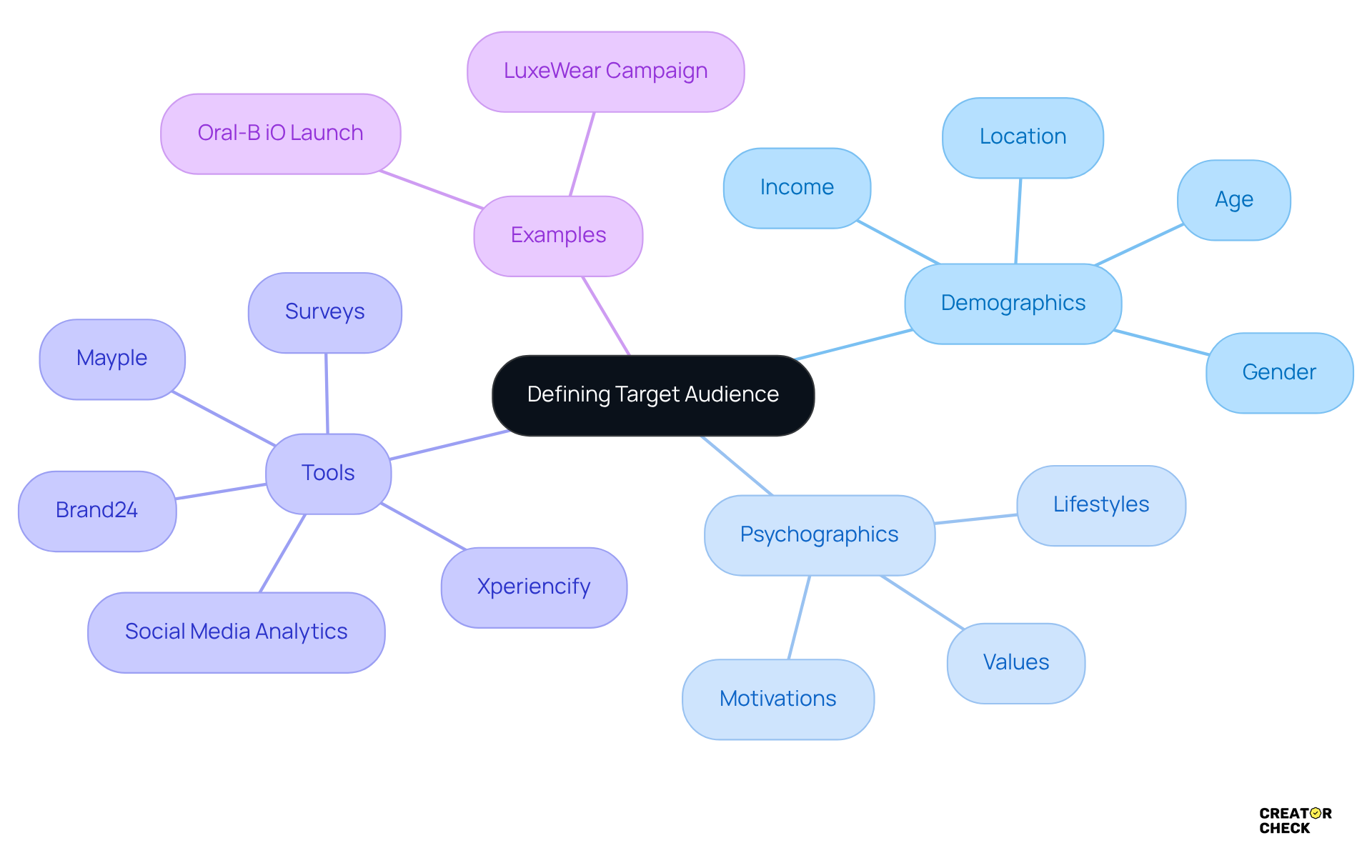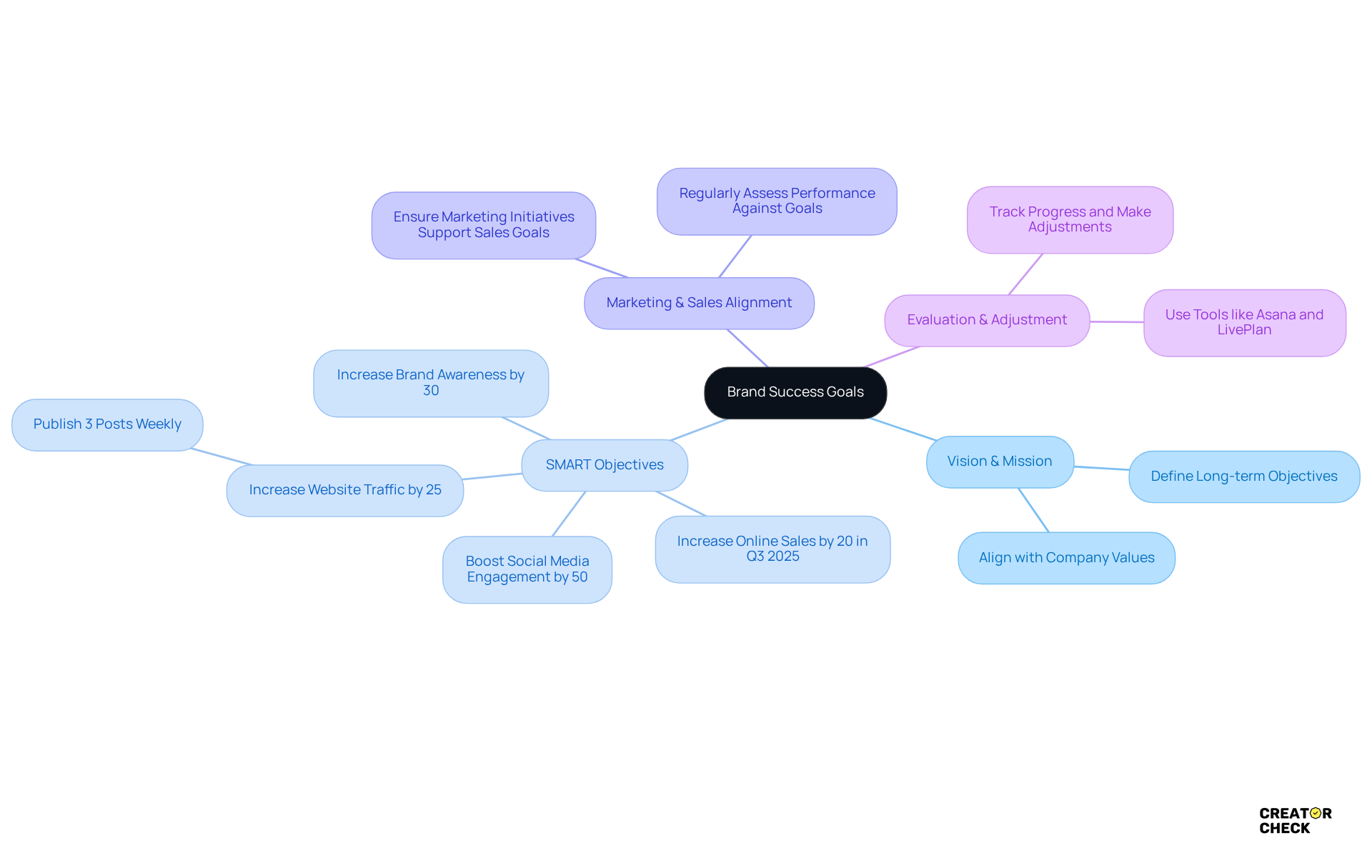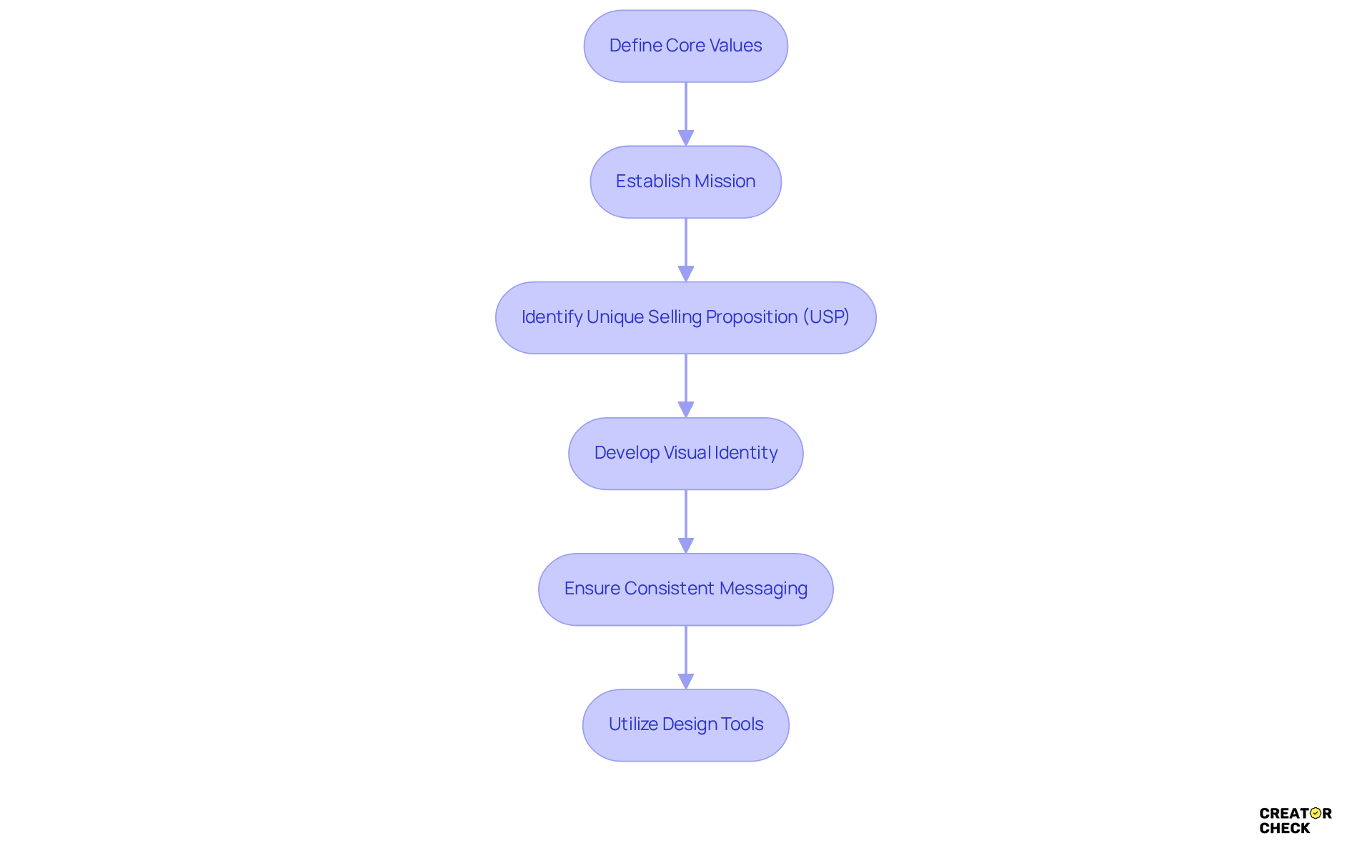Overview
This article is all about guiding you through the essential steps for effective brand planning. We’re breaking it down into four key steps that you won’t want to miss:
- Define your target audience and market landscape.
- Establish clear goals and objectives.
- Develop a consistent brand identity and messaging strategy.
- Leverage data and analytics for continuous improvement.
Each of these steps plays a vital role in crafting a successful brand strategy, so let’s dive in and see how they can work for you!
Introduction
Navigating the complexities of brand planning can seem a bit daunting, right? But it’s absolutely essential for long-term success in today’s competitive marketplace. In this article, we’re going to explore four crucial steps that empower brands to:
- Define their target audience
- Set clear objectives
- Create a consistent identity
- Leverage data for ongoing improvement
Now, with consumer behaviors and market dynamics constantly changing, how can brands stay relevant and impactful? Let’s dive into these essential strategies that will equip you with the insights needed to thrive in 2025 and beyond.
Define Your Target Audience and Market Landscape
To effectively define your target group, let’s start by looking at some demographic data like age, gender, income, and location. You can use tools like surveys and social media analytics to gather insights about your listeners’ interests and behaviors. But don’t stop there—consider psychographic factors too, such as values, lifestyles, and what motivates their purchasing decisions. This comprehensive understanding will help you create detailed buyer personas that can really guide your marketing strategies.
For example, if your brand is all about eco-conscious consumers, your messaging should definitely reflect sustainability and ethical practices. Resources like Xperiencify, Mayple, and Brand24 can offer you some great methods for identifying and refining your target demographic in 2025. Brand24, in particular, allows for real-time analysis of viewers and sentiment monitoring, which can really boost your outreach efforts.
And here’s a friendly reminder: consistently examining viewer data not only enhances engagement but also positions your brand to adapt quickly to market shifts. As Magdalena Sadowska, a Content Specialist and Social Listening Expert, puts it, 'Without the target group analysis, you’re going blind.' Plus, successful strategies—like LuxeWear's social media campaign that achieved a 3.23x return on ad spend—showcase the tangible benefits of effective target analysis.
Just keep an eye out for common pitfalls in audience analysis, such as information overload and those rapidly changing trends, to ensure your strategies stay relevant and effective. So, what does this mean for you? It’s all about staying connected and informed to make the best decisions for your brand!

Establish Clear Goals and Objectives for Brand Success
Let’s kick things off by outlining your organization’s big vision and mission. From there, break it down into specific objectives—think along the lines of increasing brand awareness by 30% or boosting social media engagement by 50% within a year. Using the SMART framework can really help here, making sure each objective is crystal clear and actionable. For example, rather than saying something vague like 'improve sales,' you could specify 'increase online sales by 20% in Q3 2025.'
It’s also super important to keep evaluating these objectives to track your progress and make adjustments when needed. Tools like Asana and LivePlan can be great allies in keeping everything on track. Did you know that marketers who set objectives are 376% more likely to report success compared to those who don’t? That really highlights how essential clear objective-setting is!
Now, let’s consider aiming for a 25% rise in website traffic by posting three times a week on popular social platforms. This strategy can significantly boost your visibility in the influencer marketing scene. Plus, aligning your marketing goals with your sales objectives is crucial, ensuring that every initiative you undertake contributes directly to your business goals. So, what does this mean for you? It’s all about setting those clear targets and working towards them together!

Develop a Consistent Brand Identity and Messaging Strategy
To build a strong identity, start by defining your entity's core values, mission, and unique selling proposition (USP). Next, think about developing a visual identity that includes a logo, color palette, and typography that really resonates with your target audience. It’s super important to keep your messaging consistent across all channels, whether it’s social media or email marketing. For example, if your company is all about sustainability, make sure that every piece of communication reflects that commitment.
So, how can you achieve this? Consider using tools like Adobe Express and Canva. These platforms can help you maintain visual consistency and create captivating content that truly reflects your company's voice. Remember, the way you present yourself matters, and it can make a big difference in how your audience connects with you!

Leverage Data and Analytics for Continuous Improvement
Implementing analytics tools is a smart move to track key performance indicators (KPIs) like website traffic, conversion rates, and social media engagement. Regularly diving into this data helps you spot trends and pinpoint areas for improvement.
For example, if you notice a particular campaign isn't hitting the mark, why not try A/B testing? Experimenting with different messaging or visuals can make a big difference.
Tools like Google Analytics and HubSpot are fantastic for providing valuable insights into customer behavior and campaign performance. By keeping an eye on your data and tweaking your strategies accordingly, you can really boost your brand's effectiveness and ROI.
So, how are you currently using data to inform your decisions?
![]()
Conclusion
Understanding the ins and outs of brand planning is crucial for any business looking to thrive in today’s competitive landscape. By pinpointing a target audience, setting clear goals, crafting a consistent brand identity, and tapping into data analytics, brands can lay a strong foundation for success. Each of these steps is interconnected, creating a holistic approach that not only boosts brand visibility but also nurtures deeper connections with consumers.
So, what are the key takeaways? The article emphasizes:
- The significance of demographic and psychographic analysis in identifying target audiences.
- The need for SMART objectives to steer marketing efforts.
- The impact of consistent messaging in establishing a recognizable brand identity.
- The use of analytics tools to help brands adapt and fine-tune their strategies based on real-time data, keeping their campaigns relevant and effective.
In a market that’s always changing, staying informed and responsive is vital. Brands that focus on these essential steps will not only tackle challenges more effectively but also set themselves up for long-term growth and success. By embracing these practices, businesses can connect authentically with their audiences and craft impactful marketing strategies that resonate in 2025 and beyond. Remember, it’s all about building those genuine connections!
Frequently Asked Questions
How can I define my target audience effectively?
To define your target audience, start by analyzing demographic data such as age, gender, income, and location. Utilize tools like surveys and social media analytics to understand your audience's interests and behaviors. Additionally, consider psychographic factors like values, lifestyles, and motivations for purchasing decisions.
What are buyer personas and why are they important?
Buyer personas are detailed profiles that represent segments of your target audience. Creating these personas helps guide your marketing strategies by providing a comprehensive understanding of your audience's needs and preferences.
What tools can help in identifying and refining my target demographic?
Tools like Xperiencify, Mayple, and Brand24 can assist in identifying and refining your target demographic. Brand24, in particular, offers real-time analysis of viewers and sentiment monitoring to enhance outreach efforts.
Why is it important to consistently examine viewer data?
Consistently examining viewer data enhances engagement and allows your brand to adapt quickly to market shifts. It helps you stay informed and make better decisions for your marketing strategies.
Can you provide an example of successful audience analysis?
An example of successful audience analysis is LuxeWear's social media campaign, which achieved a 3.23x return on ad spend, demonstrating the tangible benefits of effective target analysis.
What common pitfalls should I avoid in audience analysis?
Common pitfalls in audience analysis include information overload and failing to keep up with rapidly changing trends. Avoiding these can help ensure your strategies remain relevant and effective.




